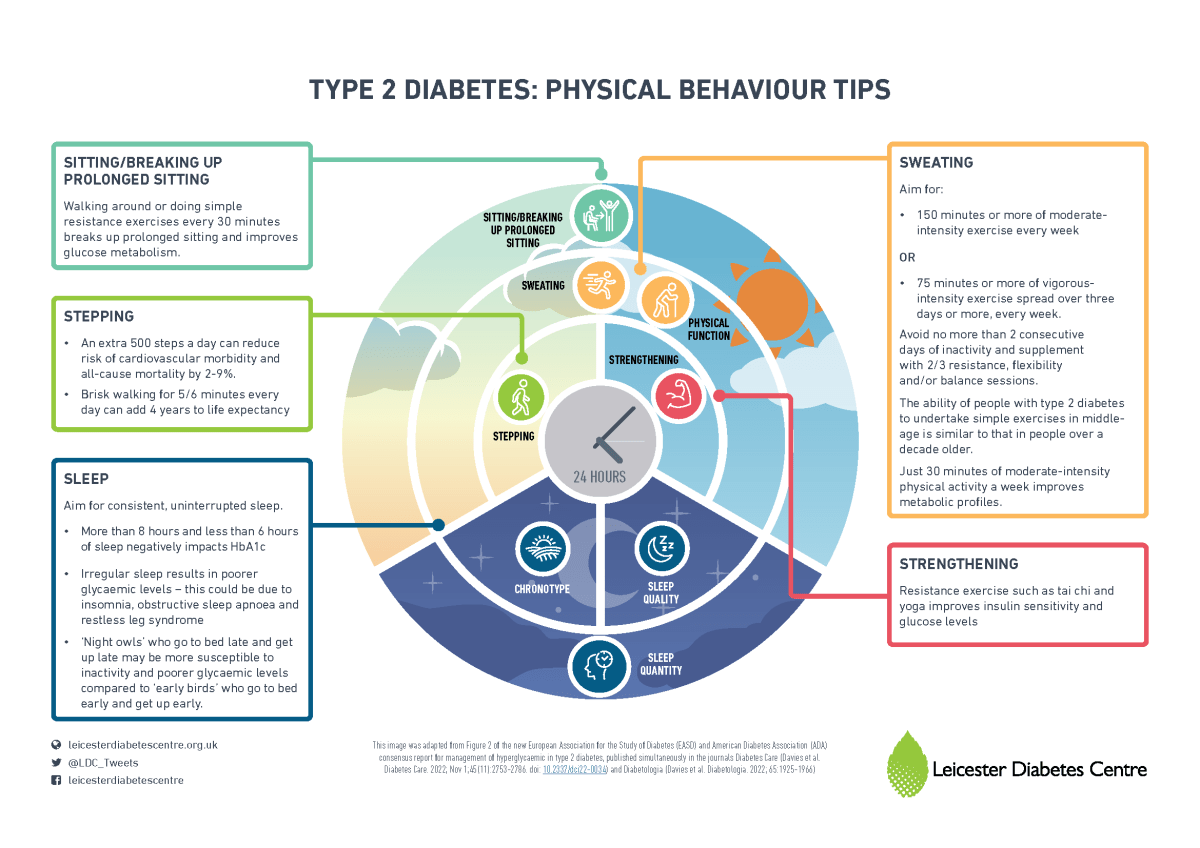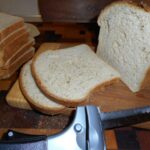Embark on a culinary journey to reclaim your health! Imagine savoring delicious, satisfying meals while effortlessly managing your diabetes. This isn’t about bland, restrictive diets; it’s about transforming your relationship with food, discovering vibrant recipes, and mastering techniques that empower you to take control of your blood sugar. Prepare to unlock a world of flavor and well-being, where healthy eating becomes a joyful experience, not a chore.
This guide unveils the secrets to crafting a diabetes-friendly diet that’s both delicious and effective. We’ll explore the science behind blood sugar regulation, provide practical strategies for portion control and mindful eating, and share a collection of mouthwatering recipes designed to nourish your body and delight your taste buds. Learn to substitute ingredients, master cooking methods, and develop a sustainable approach to long-term diabetes management that supports a vibrant and fulfilling life.
Understanding Diabetes and Dietary Needs
Diabetes, a chronic condition affecting how your body regulates blood sugar (glucose), requires careful management of your diet. Understanding how different foods impact your blood sugar levels is crucial for maintaining healthy blood glucose control and preventing long-term complications. This section will explore the relationship between diet and diabetes, emphasizing portion control and outlining a sample meal plan.
Impact of Food Groups on Blood Sugar Levels
Different food groups affect blood sugar levels differently. Carbohydrates, broken down into glucose, have the most significant impact. High-glycemic index (GI) foods, like white bread and sugary drinks, cause rapid spikes in blood sugar, while low-GI foods, such as whole grains and most fruits, lead to a slower, more gradual rise. Proteins and fats, on the other hand, have a minimal effect on blood sugar. The glycemic load (GL), which considers both the GI and the amount of carbohydrate in a serving, offers a more complete picture of a food’s impact. For example, a small portion of watermelon, while having a high GI, might have a low GL due to its relatively low carbohydrate content per serving. Conversely, a large serving of a low-GI food can still significantly impact blood sugar levels.
The Importance of Portion Control in Diabetes Management
Portion control is paramount in diabetes management. Even healthy foods, consumed in excessive amounts, can lead to elevated blood sugar. Understanding serving sizes and using measuring cups or food scales can help maintain consistent portion control. Visual cues, such as comparing a serving of pasta to a tennis ball, can also be helpful. Regular monitoring of blood sugar levels after meals can help individuals understand their individual responses to different foods and portion sizes. For instance, an individual might find that a half-cup serving of brown rice keeps their blood sugar within a healthy range, while a full cup causes a significant spike.
Foods to Include and Exclude in a Diabetes-Friendly Diet
A diabetes-friendly diet emphasizes whole, unprocessed foods.
Foods to Include:
- Lean proteins: Chicken breast, fish, beans, lentils – these provide sustained energy without significantly impacting blood sugar.
- Non-starchy vegetables: Leafy greens, broccoli, peppers – these are low in carbohydrates and rich in nutrients.
- Whole grains: Oats, brown rice, quinoa – these release glucose slowly, preventing sharp blood sugar increases.
- Healthy fats: Avocado, nuts, olive oil – these contribute to satiety and help regulate blood sugar.
- Fruits (in moderation): Berries, apples, oranges – these contain fiber and vitamins, but should be consumed in controlled portions.
Foods to Exclude or Limit:
- Sugary drinks: Soda, juice – these cause rapid blood sugar spikes.
- Processed foods: White bread, pastries, packaged snacks – these are often high in refined carbohydrates and unhealthy fats.
- Refined grains: White rice, white bread – these lack fiber and lead to rapid blood sugar increases.
- Unhealthy fats: Trans fats, saturated fats – these can negatively impact heart health, a concern for many individuals with diabetes.
Sample Weekly Meal Plan
This sample meal plan demonstrates portion control and incorporates diabetes-friendly food choices. Remember, individual needs vary, and this is a general guideline. Consult with a registered dietitian or healthcare professional to create a personalized plan. Portion sizes are approximate and can be adjusted based on individual needs and activity levels.
| Day | Breakfast (approx. 300-400 calories) | Lunch (approx. 400-500 calories) | Dinner (approx. 500-600 calories) |
|---|---|---|---|
| Monday | 1/2 cup oatmeal with 1/4 cup berries and a sprinkle of nuts | Salad with 4oz grilled chicken, mixed greens, and a light vinaigrette | 4oz baked salmon with 1/2 cup roasted vegetables and 1/2 cup brown rice |
| Tuesday | Scrambled eggs (2) with 1/2 cup spinach and a slice of whole-wheat toast | Lentil soup (1.5 cups) with a side salad | Chicken stir-fry with 1 cup mixed vegetables and 1/2 cup quinoa |
| Wednesday | Greek yogurt (1 cup) with 1/4 cup granola and a few berries | Turkey breast sandwich on whole-wheat bread with lettuce and tomato | 4oz lean ground beef with 1 cup steamed broccoli and 1/2 cup sweet potato |
| Thursday | Smoothie with 1 scoop protein powder, 1/2 cup spinach, and 1/2 cup berries | Leftover chicken stir-fry | Vegetarian chili (1.5 cups) with a side salad |
| Friday | Whole-wheat toast with avocado and a poached egg | Salad with 4oz grilled fish, mixed greens, and a light vinaigrette | Baked chicken breast with 1 cup roasted vegetables and 1/2 cup brown rice |
| Saturday | Breakfast burrito with scrambled eggs, black beans, and salsa (in a whole-wheat tortilla) | Leftover vegetarian chili | Pizza with whole-wheat crust, vegetables, and lean protein (portion controlled) |
| Sunday | Pancakes (2 small) made with whole-wheat flour and topped with berries | Leftover pizza (portion controlled) | Roast chicken with 1 cup roasted vegetables and 1/2 cup quinoa |
Delicious and Diabetes-Friendly Recipes
Mastering diabetes management involves embracing a lifestyle change that prioritizes nutritious and delicious meals. This section provides a collection of recipes designed to be both flavorful and supportive of healthy blood sugar levels. These recipes focus on incorporating low-glycemic index foods, lean proteins, fiber-rich vegetables, and healthy fats, all while minimizing added sugars and unhealthy saturated fats. Remember to always consult with your doctor or a registered dietitian to personalize your dietary plan based on your individual needs and health status.
Diabetes-Friendly Breakfast Recipes
A healthy breakfast sets the tone for the entire day, helping to regulate blood sugar levels and prevent energy crashes. The following recipes emphasize whole grains, protein, and healthy fats to keep you feeling full and energized.
| Meal Type | Ingredients | Preparation Time |
|---|---|---|
| Oatmeal with Berries and Nuts | 1/2 cup rolled oats, 1 cup unsweetened almond milk, 1/4 cup mixed berries (strawberries, blueberries, raspberries), 1 tablespoon chopped walnuts, 1/2 teaspoon cinnamon | 5 minutes |
| Greek Yogurt with Chia Seeds and Fruit | 1 cup plain nonfat Greek yogurt, 1 tablespoon chia seeds, 1/2 cup chopped fruit (apple, pear, or peaches), a sprinkle of granola (check sugar content) | 2 minutes |
| Scrambled Eggs with Spinach and Avocado | 2 eggs, 1 cup spinach, 1/4 avocado, salt and pepper to taste | 10 minutes |
| High-Protein Smoothie | 1 scoop protein powder (whey or plant-based), 1 cup unsweetened almond milk, 1/2 cup spinach, 1/4 cup berries, 1/2 banana | 5 minutes |
| Whole Wheat Toast with Avocado and Egg | 1 slice whole wheat toast, 1/4 avocado, 1 egg (cooked to preference), everything bagel seasoning | 10 minutes |
Diabetes-Friendly Lunch Recipes
Lunch should provide sustained energy and support healthy blood sugar levels throughout the afternoon. These recipes focus on lean protein sources and fiber-rich vegetables to promote satiety and balanced nutrition.
| Meal Type | Ingredients | Preparation Time |
|---|---|---|
| Chicken Salad Lettuce Wraps | 4 oz grilled chicken breast (shredded), 1/4 cup chopped celery, 1 tablespoon light mayonnaise, 1 tablespoon plain Greek yogurt, lettuce leaves | 15 minutes |
| Lentil Soup with Whole Grain Bread | 1 cup lentil soup (low sodium), 1 slice whole grain bread | 5 minutes (if pre-made soup is used) |
| Tuna Salad with Mixed Greens | 4 oz canned tuna (in water), 1 tablespoon light mayonnaise, 1 tablespoon chopped red onion, mixed greens | 10 minutes |
Diabetes-Friendly Dinner Recipes
Dinner provides an opportunity to enjoy satisfying and nutritious meals that support healthy blood sugar control. These recipes incorporate healthy fats and complex carbohydrates for balanced nutrition and sustained energy.
| Meal Type | Ingredients | Preparation Time |
|---|---|---|
| Salmon with Roasted Broccoli and Quinoa | 4 oz salmon fillet, 1 cup broccoli florets, 1/2 cup cooked quinoa, olive oil, lemon juice, herbs | 30 minutes |
| Chicken Stir-Fry with Brown Rice | 4 oz chicken breast (sliced), 1 cup mixed vegetables (broccoli, carrots, peppers), 1/2 cup cooked brown rice, soy sauce (low sodium), ginger, garlic | 25 minutes |
Mastering Meal Preparation Techniques

Mastering meal preparation is crucial for successful diabetes management. By employing specific cooking methods and ingredient substitutions, you can create delicious and healthy meals that support your blood sugar control and overall well-being. This section will guide you through techniques that minimize added sugars and unhealthy fats, while maximizing flavor and nutritional value.
Cooking Methods for Diabetes-Friendly Meals
Minimizing added sugars and unhealthy fats is paramount in diabetes management. Grilling, baking, steaming, and poaching are excellent cooking methods that require minimal added oil or fat. Grilling imparts a delightful smoky char to vegetables and lean proteins, while baking allows for even cooking and browning without excessive oil. Steaming preserves the nutrients and vibrant colors of vegetables, and poaching gently cooks proteins in liquid, resulting in tender and flavorful results. Conversely, deep frying should be avoided due to its high fat content. Similarly, excessive use of butter or oil in sautéing should be minimized. Consider using cooking sprays or non-stick pans to reduce the amount of fat needed.
Ingredient Substitutions for Healthier Cooking
Many common ingredients can be swapped for healthier alternatives. Instead of refined white sugar, consider using natural sweeteners like stevia or erythritol in moderation. These alternatives provide sweetness without significantly impacting blood sugar levels. Replace refined grains like white bread and pasta with whole-grain options, which are rich in fiber and help regulate blood sugar. Opt for lean protein sources such as chicken breast, fish, beans, and lentils, over processed meats or fatty cuts of red meat. Finally, incorporate a variety of colorful vegetables, which are packed with vitamins, minerals, and fiber. For instance, replace creamy sauces with lighter options made with Greek yogurt or unsweetened almond milk.
Step-by-Step Preparation: Mediterranean Quinoa Salad
This vibrant salad is packed with flavor and nutrients, perfect for a diabetes-friendly lunch or dinner. It features quinoa, a complete protein, alongside an array of colorful vegetables and a light lemon-herb dressing.
Step-by-Step Visual Guide
- Step 1: Quinoa Preparation: Imagine a small pot filled with water, gently simmering. Into this, we add one cup of quinoa, rinsing it thoroughly beforehand under cool, running water. The quinoa is cooked until tender and fluffy, approximately 15 minutes. Once cooked, fluff with a fork, allowing the steam to escape and the grains to separate.
- Step 2: Vegetable Prep: Picture a cutting board, vibrant with the colors of chopped vegetables. One cucumber, diced into half-inch cubes, joins a half-red onion, finely chopped, and a cup of cherry tomatoes, halved. A handful of Kalamata olives, pitted and halved, adds a salty burst of Mediterranean flavor. A generous handful of fresh parsley and mint, finely chopped, contributes bright, herbal notes.
- Step 3: Dressing Creation: In a small bowl, imagine the swirling motion of a whisk. We combine two tablespoons of olive oil, two tablespoons of lemon juice, a teaspoon of Dijon mustard, salt, and pepper. The whisk incorporates everything until a smooth, emulsified dressing forms.
- Step 4: Combining the Salad: In a large bowl, the cooked quinoa is gently combined with the prepared vegetables. The fragrant lemon-herb dressing is then poured over the mixture, tossed delicately to coat every ingredient evenly. The final result is a colorful, textured salad that tantalizes the senses.
- Step 5: Serving and Enjoyment: Imagine the salad served in a shallow bowl, its colors gleaming under soft light. A sprinkle of extra parsley adds a final touch of freshness. The salad is ready to be enjoyed, a testament to the simple beauty of healthy and delicious eating.
Mastering diabetes management doesn’t mean sacrificing enjoyment; it’s about embracing a lifestyle that nourishes your body and soul. By understanding the impact of food choices on your blood sugar, incorporating delicious recipes into your daily routine, and adopting mindful eating habits, you can transform your relationship with food and achieve lasting health. This journey is about empowerment – taking charge of your health, one tasty, satisfying meal at a time. Remember to consult your doctor or a registered dietitian for personalized guidance.
Popular Questions
Can I still enjoy desserts with diabetes?
Yes, but moderation is key. Opt for desserts made with whole grains, fruits, and less added sugar. Smaller portions and mindful consumption are crucial.
How often should I check my blood sugar?
The frequency depends on your individual needs and your doctor’s recommendations. Some individuals may need to check multiple times a day, while others may only need to check once or twice a week.
What are some good snacks for managing blood sugar between meals?
Healthy snacks include a small handful of nuts, a piece of fruit with a little nut butter, or a small portion of Greek yogurt.
Are artificial sweeteners safe for people with diabetes?
The long-term effects of artificial sweeteners are still being studied. Consult your doctor or a registered dietitian for personalized advice on their use.


